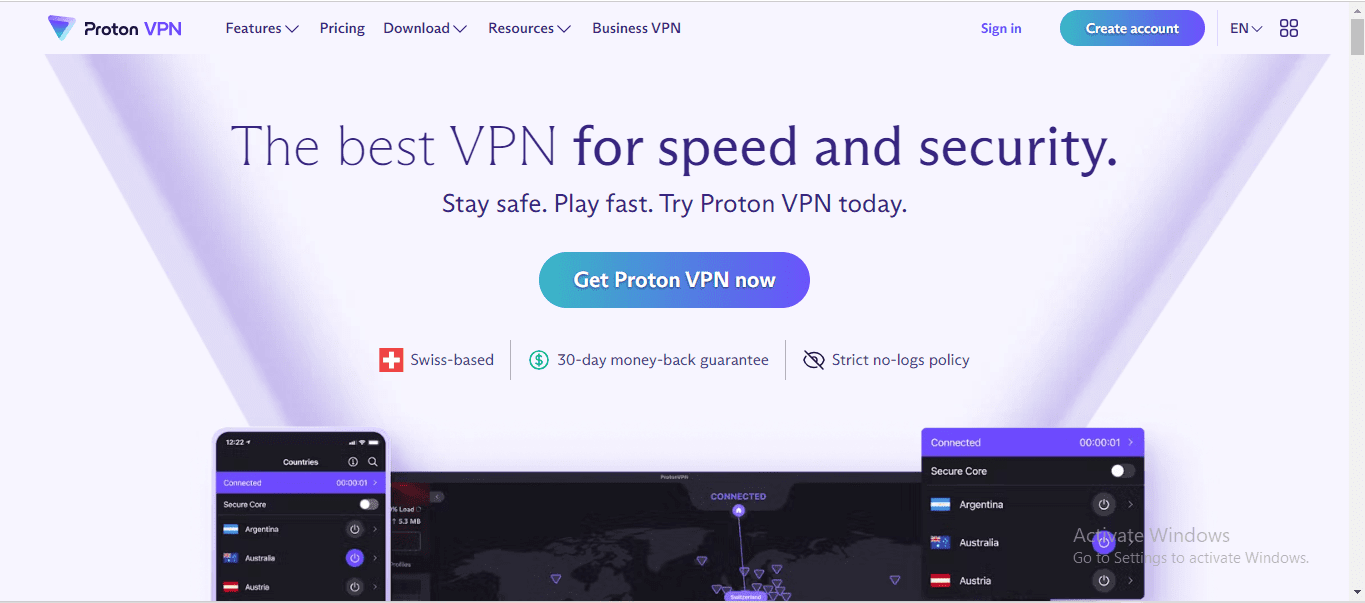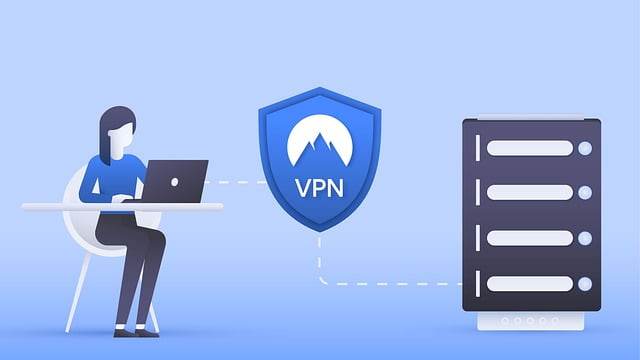Best Practices for Countering Social Engineering Attacks

In this article we will cover, what are the Best Practices for Countering Social Engineering Attacks, Social engineering attacks are surging, and the numbers are alarming. A staggering 82% of data breaches involve some form of human element, including social engineering and phishing attacks. With these threats growing in both volume and sophistication, it’s clear that traditional cybersecurity measures alone are no longer enough.
Unlike technical hacks that exploit software vulnerabilities, social engineering preys on human psychology. Attackers manipulate emotions—fear, trust, urgency—to trick people into revealing sensitive information or granting access to systems. What’s truly challenging is that even the most advanced security technologies can’t stop an employee from unknowingly clicking on a malicious link or responding to a cleverly disguised phishing email.
I’ve seen first-hand how damaging social engineering can be to organizations that are otherwise well-prepared from a technical standpoint. Despite having firewalls, antivirus software, and multi-factor authentication in place, a single employee’s mistake can lead to catastrophic breaches.
This article aims to provide actionable best practices to help organizations and individuals better defend themselves against social engineering attacks. Based on my personal experience and the insights gathered from industry practices, you’ll learn practical steps to strengthen your human firewall and keep attackers at bay.
What is Social Engineering?
Social engineering is a form of cyberattack that exploits human psychology to bypass security systems, often through manipulation and deception. Rather than targeting technical vulnerabilities, attackers rely on gaining the trust of individuals or coercing them into revealing sensitive information such as passwords, financial data, or security codes. The main goal is to trick people into taking actions they wouldn’t normally take, which can lead to unauthorized access or data theft.
In my experience, the scariest part about social engineering is that it can bypass even the strongest technological defenses, simply because it targets the human element. It’s not about breaking into a system, but rather convincing someone to open the door.
Common Types of Social Engineering Attacks:
- Phishing: Phishing is one of the most prevalent forms of social engineering and often comes in the form of fake emails that appear to be from legitimate sources. These emails typically ask users to click on a malicious link, download a harmful attachment, or provide sensitive information. I’ve seen phishing attacks slip through the best email filters because they constantly evolve to look more legitimate.
- Spear Phishing: Unlike generic phishing attempts, spear phishing is targeted and personalized. The attacker researches the victim, using information about their role, organization, or personal details to craft a more convincing message. For example, an email might seem like it’s from a CEO asking for an urgent wire transfer. This type of phishing is highly dangerous because it’s harder to recognize as fake.
- Pretexting: In pretexting, attackers create a fabricated scenario (or pretext) to deceive a target into divulging confidential information. For instance, an attacker might pretend to be a member of IT support requesting login details to “fix” a problem. By impersonating someone trustworthy, pretexting exploits trust relationships within an organization.
- Baiting and Quid Pro Quo: Baiting involves tempting the victim with an attractive offer, such as a free download or a “must-see” link, in exchange for sensitive information or access. Quid pro quo is similar but relies on the attacker promising a service or benefit in return for the victim’s cooperation. I’ve encountered cases where attackers posed as support staff offering “free” software, which turned out to be malware.
- Tailgating/Piggybacking: Social engineering isn’t limited to digital attacks; it can also involve physical tactics. Tailgating occurs when an attacker follows an authorized person into a restricted area without providing their own credentials. Piggybacking is similar but often happens with the victim’s consent—like holding the door open for someone who appears to belong there. These are physical security breaches that can be devastating if the attacker gains access to critical infrastructure.
Understanding these forms of social engineering is crucial because the tactics evolve constantly. The key is to remain vigilant, no matter how legitimate an email, request, or person may seem at first glance. This awareness forms the first line of defense against attackers who are more interested in tricking you than breaking your code.
Why Social Engineering is So Effective
Human Vulnerabilities: Humans are often considered the weakest link in the cybersecurity chain because, unlike machines, we are prone to emotional responses and make mistakes. While firewalls, encryption, and multi-factor authentication can protect data, social engineering attacks target individuals’ decision-making, bypassing these technological defenses. Attackers manipulate trust, fear, and urgency, often exploiting the fact that people are more likely to follow instructions from someone they believe to be in a position of authority or when under pressure.
In my experience, even the most security-conscious organizations can be compromised through human error. I’ve seen well-trained teams fall victim to a carefully crafted phishing email or phone call, simply because the communication seemed urgent or came from someone who appeared to be in a position of trust.
Psychological Tactics: Social engineers exploit psychological tactics to manipulate victims into disclosing information or granting access. Here are a few commonly used tactics:
- Authority: Attackers often pose as authority figures, such as company executives, IT support, or government officials. Most people are conditioned to follow instructions from figures of authority, especially when they believe it’s in their best interest. A well-known example involves attackers pretending to be executives asking for urgent wire transfers.
- Urgency: Creating a sense of urgency compels people to act without fully considering the risks. Attackers use phrases like “your account has been compromised, act now” or “this needs to be fixed immediately” to rush the victim into action before they have time to verify the request. I’ve personally seen organizations lose large sums of money because employees acted on an urgent email without questioning its validity.
- Fear: Fear is another powerful motivator in social engineering attacks. For instance, a phishing email might warn of dire consequences if the recipient doesn’t comply, such as losing access to their account or facing legal repercussions. In such cases, fear drives the victim to act against their better judgment, handing over sensitive information in an effort to avoid the perceived threat.
Examples: Several high-profile breaches have demonstrated just how effective social engineering can be:
- Twitter Hack (2020): In this incident, attackers gained control of several high-profile Twitter accounts (including those of Elon Musk, Barack Obama, and Bill Gates) through a spear-phishing attack that targeted Twitter employees. The attackers convinced employees to provide access credentials by pretending to be internal support staff. This allowed them to tweet from verified accounts, promoting a cryptocurrency scam that swindled users out of thousands of dollars(vpnMentor).
- Target Data Breach (2013): In this case, social engineers used phishing to compromise a third-party vendor, which had access to Target’s systems. Through this compromised vendor, the attackers infiltrated Target’s point-of-sale system, leading to the theft of 40 million credit card numbers and 70 million customer records. The breach cost Target over $200 million in settlement costs.
These examples show how attackers don’t need to break through firewalls or encryption—they simply need to trick the right person into giving them access. Social engineering remains one of the most effective and dangerous attack methods, precisely because it preys on human nature.
Best Practices for Countering Social Engineering Attacks
The threat of social engineering attacks is ever-evolving, and one of the most crucial defenses against it is to fortify the human element of your cybersecurity strategy. Based on my experience, here are the best practices I’ve found effective in countering these attacks:
1. Employee Training and Awareness Programs Regular and comprehensive security awareness training is essential. Employees need to be educated on the common signs of phishing emails, social engineering scams, and how to verify suspicious requests. The most successful social engineering attacks often exploit a lack of awareness, so keeping teams up to date on the latest tactics is vital. I recommend incorporating real-world phishing simulations as part of the training to measure readiness and reinforce learning.
For example, one organization I worked with dramatically reduced phishing success rates after implementing a quarterly training program with simulated phishing attacks. Over time, employees became more adept at spotting malicious emails and questioning suspicious requests.
2. Multi-Factor Authentication (MFA) Multi-Factor Authentication is one of the simplest and most effective ways to add a layer of protection against social engineering attacks. Even if a user unknowingly hands over their credentials, MFA can prevent the attacker from accessing the account without an additional verification step. Whether it’s a code sent to the user’s phone or a biometric scan, MFA is an effective way to block unauthorized access.
In one case, an organization I worked with was able to prevent a major breach because their MFA system required an additional code that the attacker couldn’t bypass, despite obtaining the user’s password through a phishing email.
3. Limit Privileged Access Adopting the principle of least privilege (PoLP) is a crucial step in minimizing the damage from social engineering attacks. This means giving employees the minimum level of access necessary to perform their roles. In many breaches, attackers succeed because an employee has access to systems or information beyond what they need. By limiting access, you reduce the potential damage if an account is compromised.
For instance, in a company where privileged access was tightly controlled, even when a social engineer tricked an employee into revealing their login credentials, the attacker couldn’t access sensitive data because the employee had limited permissions.
4. Conduct Regular Security Audits and Penetration Testing Regular security audits and penetration testing are essential for identifying vulnerabilities before attackers can exploit them. Simulating social engineering attacks—such as phishing tests—allows organizations to assess their employees’ susceptibility to these attacks and adjust training programs accordingly.
I’ve worked with organizations that conduct quarterly penetration testing, including social engineering scenarios, to uncover weaknesses in both technical systems and human behavior. These tests help identify gaps that can be closed through better policies, tools, and training.
5. Email Filtering and Anti-Phishing Solutions Utilizing automated tools such as email filtering and anti-phishing solutions can help intercept phishing emails before they reach the inboxes of employees. These tools analyze email content for red flags like suspicious links or attachments and help block them from entering the network. While no tool is foolproof, they are an important line of defense in preventing social engineering attacks from reaching your employees.
I’ve seen companies dramatically reduce the volume of phishing emails hitting their employees’ inboxes by using advanced email filtering systems that integrate threat intelligence to detect and block the latest social engineering attempts.
6. Incident Response Planning Even with all these defenses, no system is 100% secure. This is why a robust incident response plan is critical. An effective plan includes clear guidelines on how to identify, report, and respond to social engineering attacks. It should cover steps to contain the attack, investigate the breach, recover from it, and implement lessons learned to strengthen future defenses.
In one instance, an organization was able to minimize the impact of a phishing attack because they had a well-rehearsed incident response plan. Employees quickly reported the suspicious activity, IT locked down compromised accounts, and the attack was contained within minutes.
By integrating these best practices into your organization’s security strategy, you can greatly reduce the risk posed by social engineering attacks. These defenses, combined with a strong security culture, can turn your team into a human firewall, making it much harder for attackers to exploit human vulnerabilities.
Technology Solutions to Strengthen Defense
While human training and awareness are crucial in countering social engineering attacks, integrating robust technology solutions into your security framework can provide additional layers of defense. Based on my experience, these tools help detect, prevent, and respond to potential threats more effectively.
1. Security Information and Event Management (SIEM):
SIEM tools are essential for monitoring, detecting, and responding to security events across an organization’s network. These systems aggregate and analyze data from various sources—firewalls, endpoint devices, and user activity—to identify unusual patterns that may indicate a social engineering attack. SIEMs excel at correlating suspicious behaviors, like login attempts from unusual locations or an increase in failed login attempts, which may signal compromised credentials.
I’ve seen SIEM systems alert organizations to early-stage social engineering attempts, allowing them to react before major damage was done. Implementing SIEM tools like Splunk or IBM QRadar can significantly enhance visibility into potential attack vectors.
2. Email Security Gateways:
Phishing remains the most common form of social engineering, and email security gateways are a frontline defense. These tools filter incoming emails, scanning for malicious attachments, suspicious links, and spoofed email addresses before they ever reach a user’s inbox. They can block phishing emails, preventing users from clicking on harmful links or disclosing sensitive information.
From my experience, companies using advanced email security gateways like Proofpoint or Mimecast saw a noticeable decrease in phishing emails reaching their employees. This greatly reduces the likelihood of a breach due to human error.
3. Threat Intelligence Tools:
To stay ahead of evolving social engineering tactics, leveraging threat intelligence tools is key. These solutions gather data on new phishing techniques, malicious domains, and the latest social engineering tactics from the dark web and other sources. By continuously monitoring for emerging threats, organizations can update their security defenses to address new vulnerabilities before they are exploited.
I’ve found threat intelligence tools like Recorded Future and ThreatConnect particularly useful in keeping organizations informed about the latest attack trends, allowing them to proactively adjust security measures.
The Role of Culture in Preventing Social Engineering

Beyond technology and training, fostering a strong security-first culture is one of the most effective ways to combat social engineering attacks. When employees view cybersecurity as part of their daily responsibilities, rather than an occasional requirement, they become an active line of defense.
Building a Security-First Culture:
Creating a culture that prioritizes security starts with leadership. If executives and managers demonstrate a commitment to security by enforcing policies and encouraging vigilance, it trickles down to all employees. Regularly reinforcing the importance of security helps employees remain alert to potential threats and more willing to engage in best practices like reporting phishing attempts, verifying requests, and being cautious with sensitive data.
In my experience, organizations that adopt a security-first mindset see a significant reduction in social engineering success rates. In these environments, employees feel empowered to challenge suspicious requests, even from senior staff, knowing that security takes precedence over hierarchy or convenience.
Open Communication Channels:
One key aspect of building this culture is fostering open communication. Employees need to feel comfortable reporting potential threats without fear of retribution or embarrassment. By promoting a non-judgmental environment where staff can ask questions or report suspicious activities, organizations ensure that employees won’t hesitate to act when they encounter potential social engineering tactics.
I’ve seen firsthand how organizations with open communication channels often detect threats earlier. Employees feel empowered to report even minor anomalies, which can prevent small issues from escalating into significant breaches. Establishing hotlines, dedicated security teams, or easy-to-use reporting mechanisms encourages proactive reporting, improving overall resilience.
A strong security culture makes each employee a guardian of the organization’s security posture. When everyone feels responsible for security, the risks posed by social engineering attacks can be drastically reduced.
Real-World Case Studies
Social engineering attacks have caused some of the most significant breaches in recent years, exposing the vulnerabilities inherent in human behavior. By analyzing real-world case studies, we can gain valuable insights into how these attacks work and the preventive measures that could have mitigated them.
1. The Twitter Social Engineering Attack (2020):
In one of the most notable social engineering breaches of recent years, attackers successfully targeted Twitter employees through a spear-phishing attack. The attackers posed as Twitter’s internal IT team and convinced employees to provide credentials to sensitive internal systems. This allowed the attackers to hijack high-profile accounts, including those of Elon Musk, Jeff Bezos, Barack Obama, and others, to promote a cryptocurrency scam.
Lessons Learned:
- Security Training: The attack revealed the importance of comprehensive employee training. Twitter employees may have avoided being manipulated if they had been better prepared to recognize spear-phishing attempts.
- Multi-Factor Authentication (MFA): While Twitter had MFA in place for user accounts, the internal systems accessed by the attackers were not adequately protected by MFA. Strengthening MFA at all levels could have prevented unauthorized access.
- Role-Based Access Control (RBAC): Limiting employee access to sensitive systems using RBAC could have minimized the number of employees vulnerable to the phishing attack. Only employees with a legitimate need should have access to sensitive infrastructure.
2. Target Data Breach (2013):
In this massive breach, attackers used social engineering to gain access to Target’s network via a third-party vendor that provided HVAC services. The attackers sent phishing emails to employees of the vendor, tricking them into revealing login credentials. Once inside, the attackers were able to access Target’s payment processing system, leading to the theft of 40 million credit and debit card numbers, as well as personal information for 70 million customers.
Lessons Learned:
- Third-Party Risk Management: This breach underscores the importance of vetting third-party vendors and ensuring that they follow strong cybersecurity protocols. Target could have avoided this breach by enforcing stricter security standards on its vendors.
- Network Segmentation: The attackers were able to move laterally within Target’s network, gaining access to sensitive systems. Better network segmentation could have prevented them from accessing payment processing systems, even if the vendor’s credentials were compromised.
- Regular Security Audits: Conducting regular security audits, including vulnerability assessments of third-party connections, could have identified weaknesses in Target’s vendor relationships and mitigated this attack.
3. Ubiquiti Networks Phishing Attack (2015):
In this attack, Ubiquiti Networks lost $46.7 million to a social engineering scam in which attackers posed as company executives and convinced employees to wire funds to overseas accounts. The attackers used spear-phishing techniques to impersonate high-level executives in email communications, creating a sense of urgency that pressured employees into bypassing standard security protocols.
Lessons Learned:
- Email Authentication and Verification: Employees should have a reliable process for verifying financial requests, especially those involving large sums of money. Simple phone verification could have prevented this attack.
- Authority and Urgency Training: Organizations must educate employees on common psychological tactics, like the sense of urgency used in this attack. Employees should feel comfortable questioning even the most urgent requests if they seem suspicious.
- Segregation of Duties: Implementing segregation of duties in financial operations could have required multiple approvals for large transactions, providing an additional layer of protection.
Preventive Measures That Could Have Helped:
- Comprehensive Employee Training focusing on phishing, spear-phishing, and social engineering tactics.
- MFA and Stronger Access Controls to protect sensitive systems and data.
- Third-Party Risk Management practices to ensure vendors adhere to strict cybersecurity measures.
- Incident Response Plans tailored for social engineering scenarios, including immediate containment and mitigation protocols.
These case studies highlight how even large organizations with strong cybersecurity defenses can fall victim to social engineering due to human factors. By learning from these real-world examples and implementing the right preventive measures, organizations can better protect themselves against these increasingly sophisticated attacks.
Conclusion
Recap of Key Points:
Social engineering attacks exploit human psychology, and as such, they require a multi-faceted defense strategy. To effectively counter these attacks, organizations and individuals should focus on:
- Employee Training and Awareness Programs: Regularly educate employees on how to recognize and respond to phishing and other social engineering tactics.
- Multi-Factor Authentication (MFA): Protect accounts with multiple layers of security.
- Least Privilege Principle: Limit user access based on job roles to minimize risk.
- Regular Audits and Penetration Testing: Simulate attacks to assess the organization’s resilience.
- Technology Solutions: Use tools like SIEM, email gateways, and threat intelligence systems to detect and block attacks.
- Security-First Culture: Build an environment where security is a priority, and employees feel comfortable reporting suspicious activities.
- Real-World Learning: Analyze high-profile breaches to implement lessons and prevent similar incidents.
Now is the time to act! Don’t wait for a breach to occur before taking social engineering seriously. Start by implementing the best practices discussed in this article and invest in both ongoing training and advanced security technologies. These proactive measures will help you stay secure in an increasingly complex cybersecurity landscape.
FAQs
1. What is the most common type of social engineering attack?
The most common type of social engineering attack is phishing, which typically involves fraudulent emails or messages that trick individuals into providing sensitive information, such as usernames and passwords. Phishing attacks can also lead to malware infections when users click on malicious links. Variants like spear phishing (targeting specific individuals) and whaling (targeting high-profile executives) are also prevalent .
2. How can I recognize a phishing attempt?
Recognizing a phishing attempt involves looking for several warning signs:
Suspicious Sender: Check the email address; often, it may mimic a legitimate one with slight variations.
Urgency or Threats: Phishing messages often create a sense of urgency or threaten consequences to compel immediate action.
Generic Greetings: Many phishing emails use generic greetings like “Dear Customer” instead of your name.
Unexpected Attachments or Links: Be cautious with emails that prompt you to click links or download attachments from unknown sources .
3. What tools can help prevent social engineering attacks?
Several tools can aid in preventing social engineering attacks:
Security Awareness Training: Platforms like KnowBe4 offer training modules to educate employees on recognizing and responding to phishing attacks.
Email Security Gateways: Solutions such as Proofpoint or Mimecast can filter out phishing emails before they reach inboxes.
Multi-Factor Authentication (MFA): Implementing MFA tools, like Authy or Google Authenticator, adds an extra layer of security for sensitive accounts .
4. How often should an organization conduct social engineering testing?
Organizations should conduct social engineering testing at least biannually, but quarterly tests can provide more frequent evaluations of employee readiness. Regular testing helps reinforce training, keeps security awareness top of mind, and allows organizations to measure improvements over time.
For more information on these topics, you can visit the following resources:
- CISA – Social Engineering
- KnowBe4 – Security Awareness Training
- Proofpoint – Email Security Solutions
Also read: What is the Best Resource for Learning Ethical Hacking?
Also read: Antivirus Software is Failing You! Here’s Why You Should Be Worried!
Loading newsletter form...






